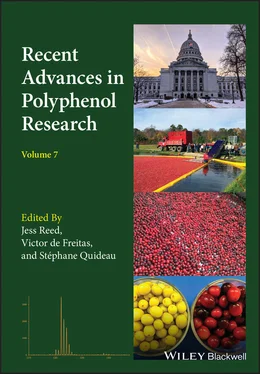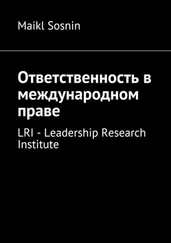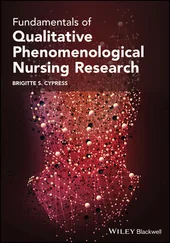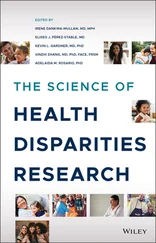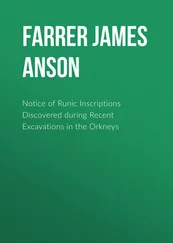Recent Advances in Polyphenol Research
Здесь есть возможность читать онлайн «Recent Advances in Polyphenol Research» — ознакомительный отрывок электронной книги совершенно бесплатно, а после прочтения отрывка купить полную версию. В некоторых случаях можно слушать аудио, скачать через торрент в формате fb2 и присутствует краткое содержание. Жанр: unrecognised, на английском языке. Описание произведения, (предисловие) а так же отзывы посетителей доступны на портале библиотеки ЛибКат.
- Название:Recent Advances in Polyphenol Research
- Автор:
- Жанр:
- Год:неизвестен
- ISBN:нет данных
- Рейтинг книги:5 / 5. Голосов: 1
-
Избранное:Добавить в избранное
- Отзывы:
-
Ваша оценка:
- 100
- 1
- 2
- 3
- 4
- 5
Recent Advances in Polyphenol Research: краткое содержание, описание и аннотация
Предлагаем к чтению аннотацию, описание, краткое содержание или предисловие (зависит от того, что написал сам автор книги «Recent Advances in Polyphenol Research»). Если вы не нашли необходимую информацию о книге — напишите в комментариях, мы постараемся отыскать её.
Recent Advances in Polyphenol Research
Recent Advances in Polyphenol Research — читать онлайн ознакомительный отрывок
Ниже представлен текст книги, разбитый по страницам. Система сохранения места последней прочитанной страницы, позволяет с удобством читать онлайн бесплатно книгу «Recent Advances in Polyphenol Research», без необходимости каждый раз заново искать на чём Вы остановились. Поставьте закладку, и сможете в любой момент перейти на страницу, на которой закончили чтение.
Интервал:
Закладка:
2 Chapter 2 Figure 2.1 Origin of the structural diversity in oligomeric PAs: structural ... Figure 2.2 Origin of the structural diversity in oligomeric PAs: B‐type conn... Figure 2.3 Origin of the structural diversity in oligomeric PAs: compounds h... Figure 2.4 Acid hydrolysates of the dimeric proanthocyanidin isolated from A ... Figure 2.5 Mayer's PA (procyanidin A2): the terminological origin of A/B‐typ... Figure 2.6 Structures of the tetramers with A‐type linkages. Figure 2.7 Two plausible biosynthetic pathways forming the A‐type structure.... Figure 2.8 Retrosynthetic analyses of the A‐type structure. Figure 2.9 Oxidative conversion of the B‐type to the A‐type structure. Figure 2.10 Radical‐mediated oxidative conversion. Figure 2.11 Stepwise construction of the A‐type structure. Figure 2.12 Cascade reaction of 2‐hydroxychalcones with a phloroglucinol der... Figure 2.13 One‐pot formation of the A‐type structure. Figure 2.14 Direct annulation approach to the A‐type structure. Figure 2.15 Early studies on annulation reaction of flavylium 24 with (+)‐ca... Figure 2.16 Annulation reaction by Kraus. Figure 2.17 Asymmetric annulation approach. Figure 2.18 Strategy for stereoselective annulation. Figure 2.19 Synthesis of a 2,4‐dioxy flavan derivative. Figure 2.20 Model study for stereoselective flavan annulation. Figure 2.21 Pettus's diinsininol aglycon synthesis. Figure 2.22 Strategy for monomer synthesis. Figure 2.23 De novo synthesis of the C(7)‐hydroxy monomer unit. Figure 2.24 Total synthesis of procyanidin A2 via flavan annulation. Figure 2.25 Annulation with a free flavan unit and syntheses of procyanidin ... Figure 2.26 DFT calculations of the Wheland intermediates, II and III, deriv... Figure 2.27 Synthesis of cinnamtannin B1 based on the orthogonal activation ... Figure 2.28 Structure of (+)‐selligueain A, its monomeric flavan constituent... Figure 2.29 Orthogonal activation and synthesis of selligueain A. Figure 2.30 Synthesis of a series of dimeric PAs having A‐type structure via...
3 Chapter 3 Figure 3.1 Wild wolf feeding on Alaskan salmonberries. Figure 3.2 Alaska Native youth engage in a workshop featuring simple mobile ... Figure 3.3 (a) Fucus distichus (bladder wrack), a traditionally used phlorot... Figure 3.4 (a) Wild Vaccinium uliginosum (bog blueberry) growing on the Alas...
4 Chapter 4 Figure 4.1 Biosynthetic pathways leading to production of condensed tannins.... Figure 4.2 Molecular structure of a condensed tannin polymer.Figure.4.3 Condensed tannins (CTs) influence many aspects of Populus ecology...
5 Chapter 5Figure 5.1 Representative schematic of the MALDI‐TOF MS process. From left t...Figure 5.2 Natural isotope distribution of procyanidin A2 (a) and procyanidi...Figure 5.3 Chemical structures of PAC trimers, which show 2A:0B‐type interfl...Figure 5.4 Percentage of A‐type interflavan bonds in cranberry PAC oligomers...Figure 5.5 Percentage of A‐type interflavan bonds in apple PAC oligomers fro...Figure 5.6 Deconvolution of MALDI‐TOF MS of 21 different ratios of isolated ...Figure 5.7 Principal component analysis score plot of proanthocyanidins from...Figure 5.8 Principal component analysis score plot of proanthocyanidins from...Figure 5.9 Principal component analysis of proanthocyanidins from apples, cr...
6 Chapter 6Figure 6.1 Structures of flavan‐3‐ol subunits that give rise to profisetinid...Figure 6.2 Common structural features of PAs: different flavan‐3‐ol subunits...Figure 6.3 Profile of metabolites identified during metabolism of NEPA from ...Figure 6.4 Phenolic reactions during fermentation and oxidation. A‐ring phen...Figure 6.5 Illustration of a rapid approach to proanthocyanidin isolation an...Figure 6.6 HILIC chromatography of (a) pine bark and (b) birch leaf proantho...Figure 6.7 Countercurrent chromatography for preparing depleted and fortifie...Figure 6.8 Products derived from depolymerization reaction of proanthocyanid...Figure 6.9 Identified or proposed side reaction products from phloroglucinol...Figure 6.10 Schematic representation of products obtained from chemical depo...Figure 6.11 MALDI‐TOF MS spectrum of sainfoin proanthocyanidins consisting o...Figure 6.12 Figure showing major fragments observed during mass spectrometri...Figure 6.13 Starter/terminal (circled here) and extension units (all others)...Figure 6.14 Fingerprinting of prodelphinidins and procyanidins in two Onobry ...Figure 6.15 Expansion of the carbonyl region of CPMAS 13C NMR spectrum of fe...Figure 6.16 1H‐ 13C HSQC NMR spectrum (a) of purified proanthocyanidins from Figure 6.17 Comparison of the results obtained of fraction of procyanidins (...Figure 6.18 1H– 13C HSQC NMR spectra of purified cranberry proanthocyanidin s...Figure 6.19 Gel‐state 1H– 13C (500/125 MHz) HSQC NMR spectrum (4:1 DMSO‐ d 6/py...Figure 6.20 Clustering of near‐infrared reflectance spectra of commercial ta...Figure 6.21 Relationship between the average molecular weight of proanthocya...
7 Chapter 7Figure 7.1 (a) Structures of the three canonical monolignols, p ‐coumaryl, co...Figure 7.2 Phenolic compounds derived from the flavonoid (tricin) and hydrox...Figure 7.3 Simplified scheme of the general polyphenolics biosynthetic pathw...Figure 7.4 (a) Structures of the flavonoids that are known to form flavonoli...Figure 7.5 (a) Structures of the hydroxystilbenes that are known to form sti...Figure 7.6 (a) Aromatic region of the 2D‐HSQC‐NMR spectrum of the lignin iso...Figure 7.7 Lignin biosynthetic pathway in grasses (and other monocots) showi...Figure 7.8 Naringenin cross‐coupling modes with monolignols. (a) 4′– O –β coup...Figure 7.9 Biosynthetic pathway of simple hydroxystilbenes. PAL, phenylalani...Figure 7.10 Piceatannol’s phenolic radical and its different resonance forms...Figure 7.11 (a) Chromatogram of the DFRC degradation products released from ...Figure 7.12 Side‐chain (δ C/δ H48‐98/2.6‐6.5) and aromatic (δ C/δ H96‐155/5.6‐...Figure 7.13 (a) Piceatannol dehydrodimerization by 8– O –4′ coupling to give t...Figure 7.14 (a) Chromatogram of the DFRC degradation products released from ...Figure 7.15 Aliphatic‐oxygenated (δ C/δ H48−98/2.6−6.8), and aromatic (δ C/δ H...
8 Chapter 8Figure 8.1 Phylogenetic analysis of characterized PA‐regulating MYBs. ...Figure 8.2 Model depicting the interaction of MYB activators, MYB repressors...Figure 8.3 Transactivation of poplar PtMYB165 and PtMYB179 promoters by PtMY...Figure 8.4 Phylogenetic analysis of two major groups of bHLHs active in MBW ...
9 Chapter 9Figure 9.1 Notable phenolic compounds of mosses and hornworts. Sphagnorubin ...Figure 9.2 Phylogenetic analysis of sequences related to phenylpropanoid bio...Figure 9.3 A section of the core phenylpropanoid/flavonoid pathway leading t...Figure 9.4 Examples of varied biosynthetic routes to the simple coumarin sco...Figure 9.5 A section of the proposed biosynthetic route to the bis‐benzyls m...
10 Chapter 10Figure 10.1 Flavan‐3‐ol monomer base units which could make assembly of proa...Figure 10.2 Examples of proanthocyanidin structures showing the most commonl...Figure 10.3 Examples of natural and synthetic modifications that could occur...Figure 10.4 Red wine mouthfeel can be categorized by matrix composition (e.g...Figure 10.5 Microbial metabolites that have been identified and their plausi...
11 Chapter 11Figure 11.1 Emission wavelengths of some (poly)phenolic compounds and chloro...Figure 11.2 Jablonski diagrams showing energy transitions during fluorescenc...Figure 11.3 Anthocyanin imaging. (a) General structure of an anthocyanidin b...
Guide
1 Cover Page
2 Series Page
3 Title Page
4 Copyright Page
5 Contributors
6 Preface
Читать дальшеИнтервал:
Закладка:
Похожие книги на «Recent Advances in Polyphenol Research»
Представляем Вашему вниманию похожие книги на «Recent Advances in Polyphenol Research» списком для выбора. Мы отобрали схожую по названию и смыслу литературу в надежде предоставить читателям больше вариантов отыскать новые, интересные, ещё непрочитанные произведения.
Обсуждение, отзывы о книге «Recent Advances in Polyphenol Research» и просто собственные мнения читателей. Оставьте ваши комментарии, напишите, что Вы думаете о произведении, его смысле или главных героях. Укажите что конкретно понравилось, а что нет, и почему Вы так считаете.
